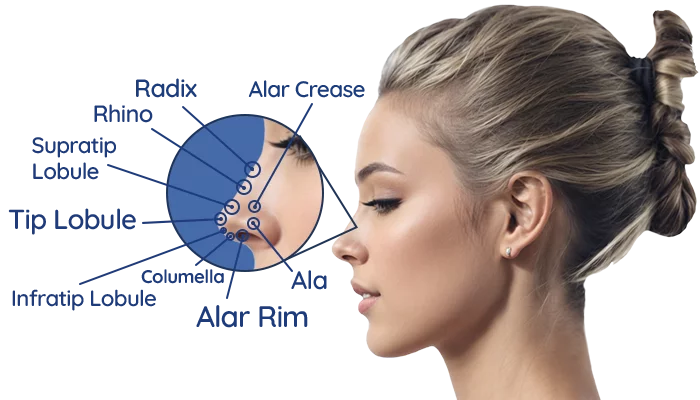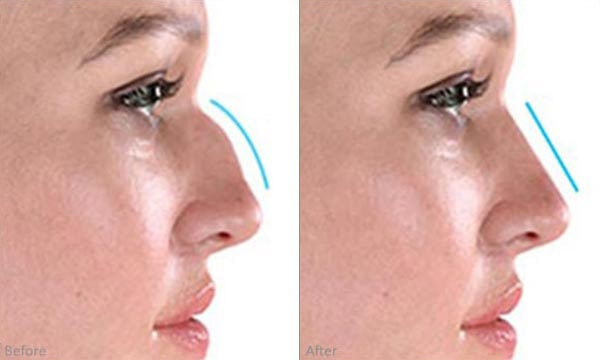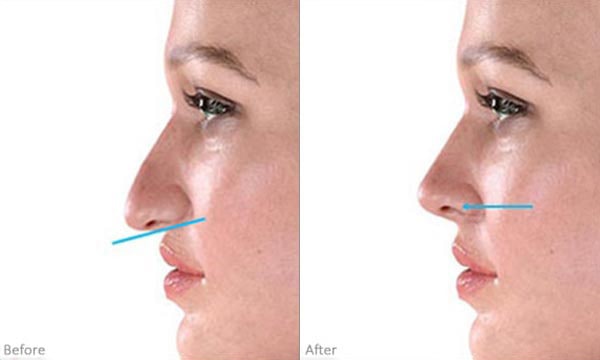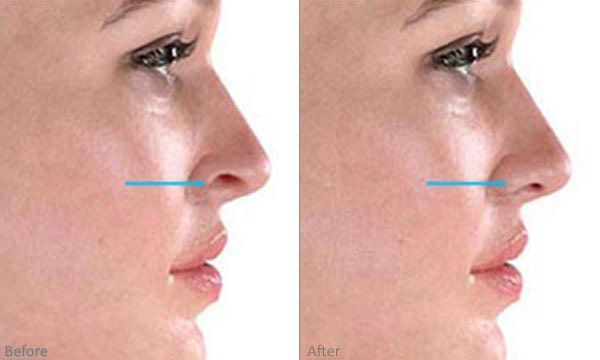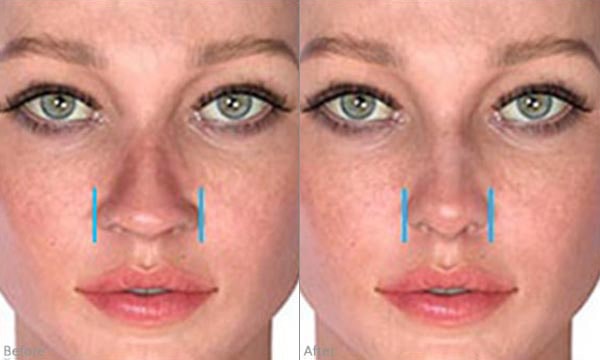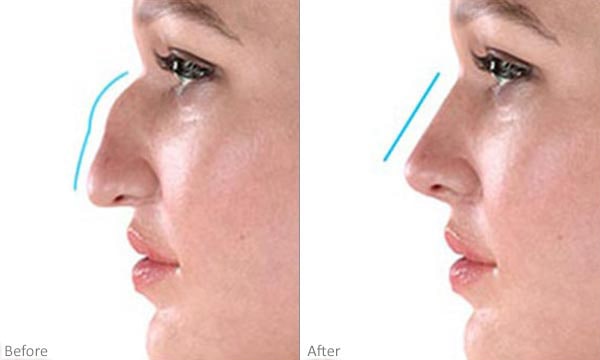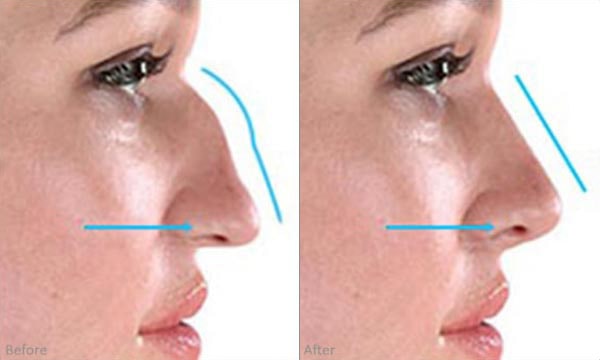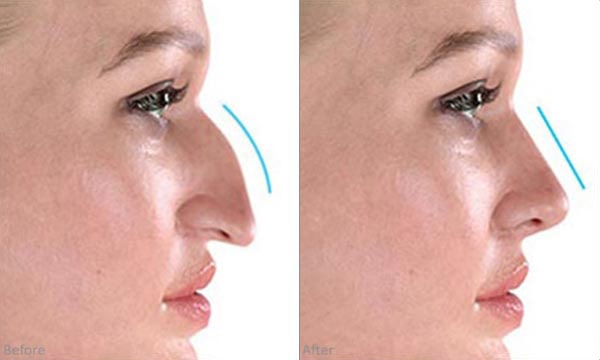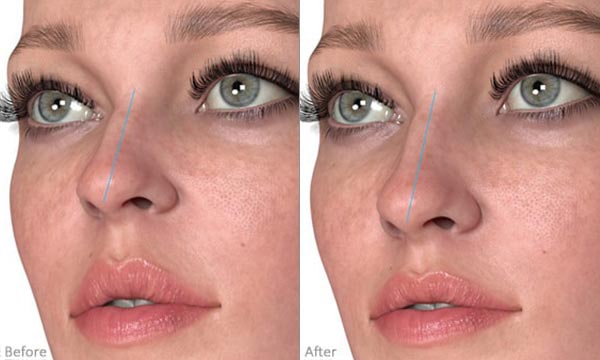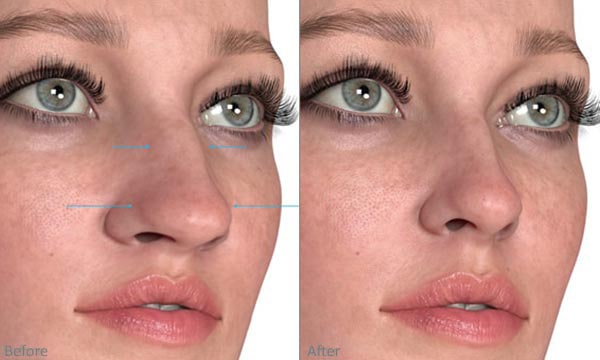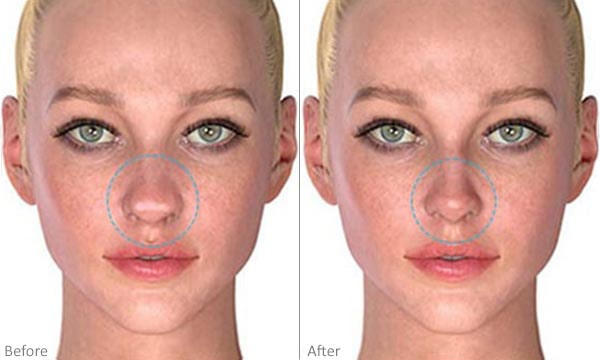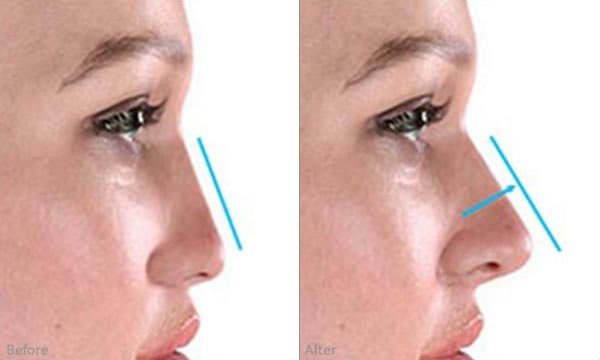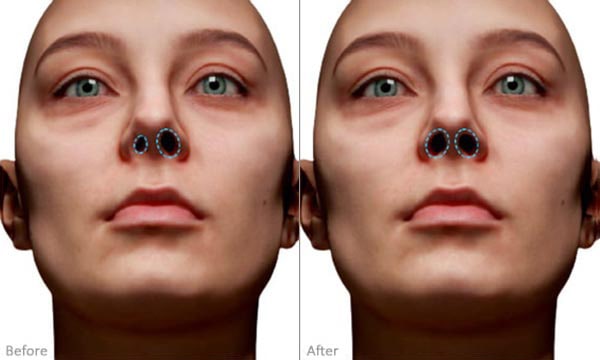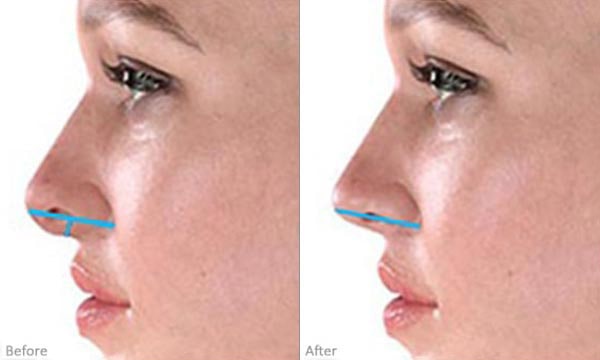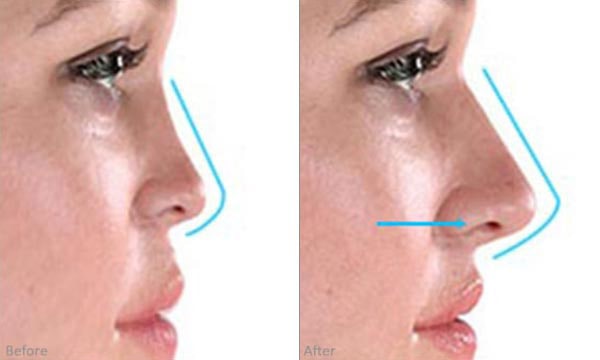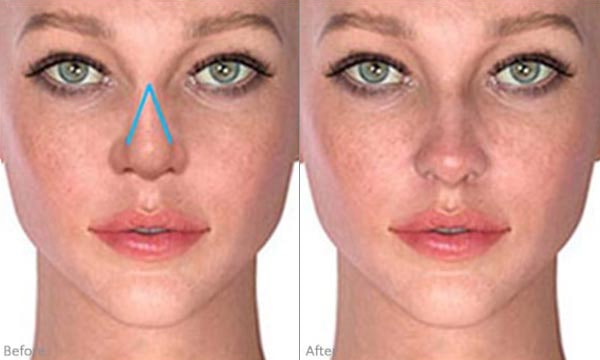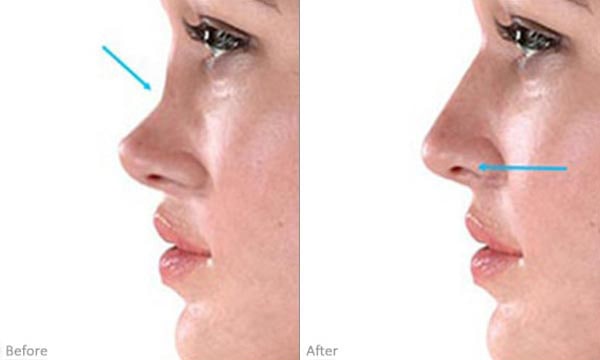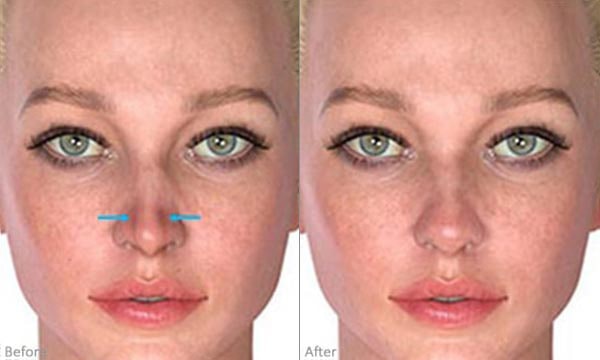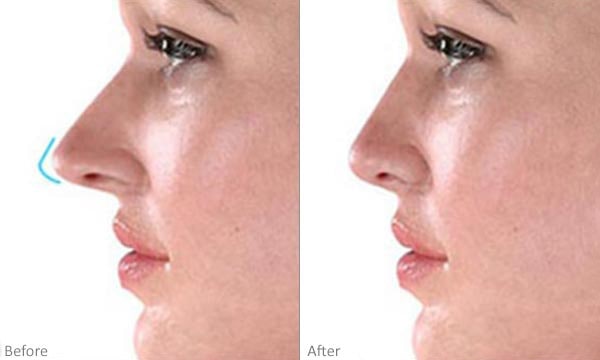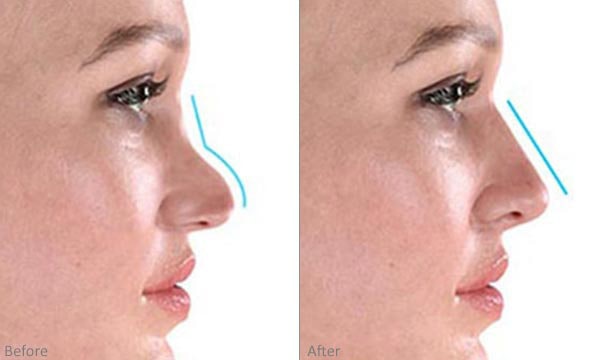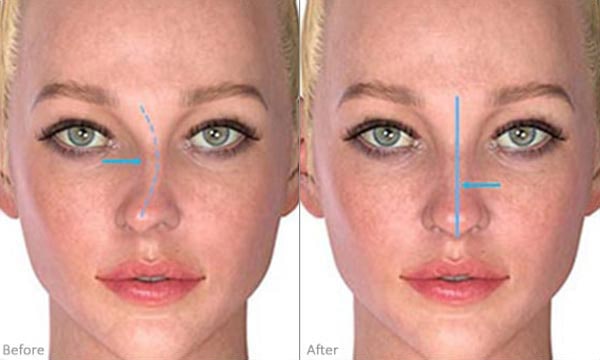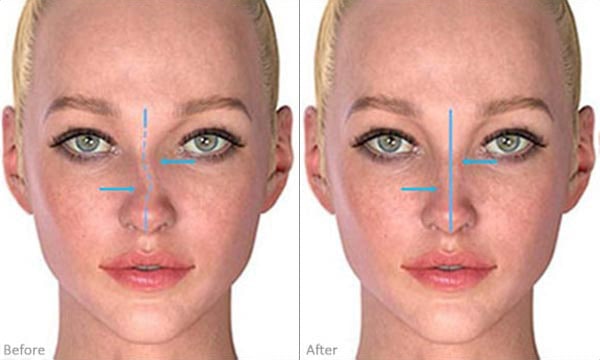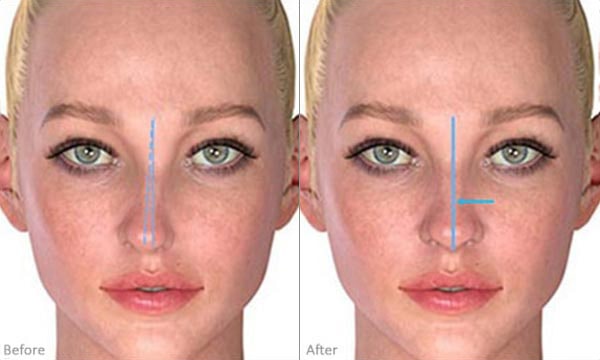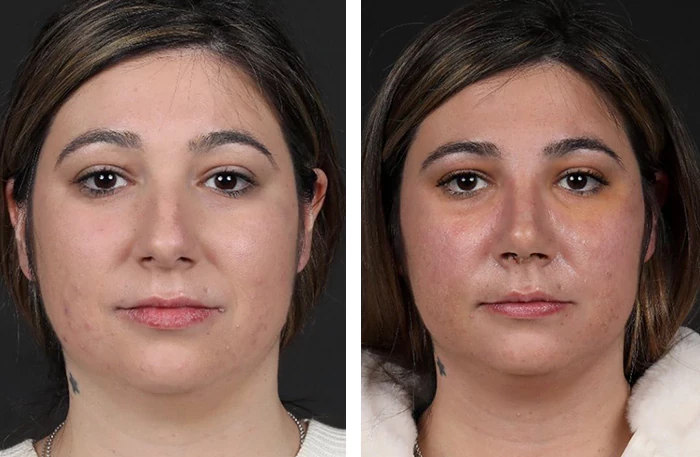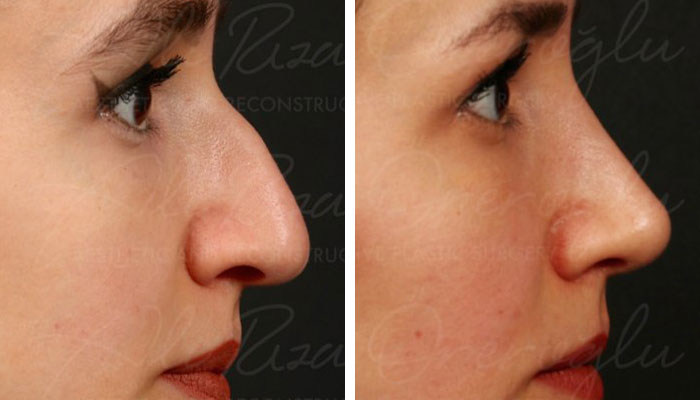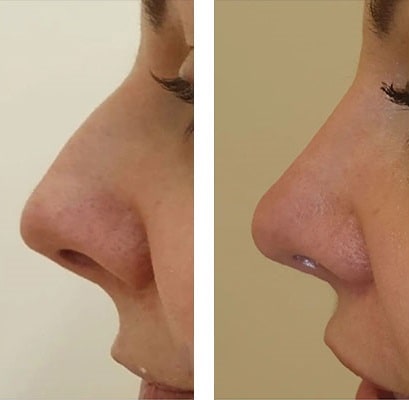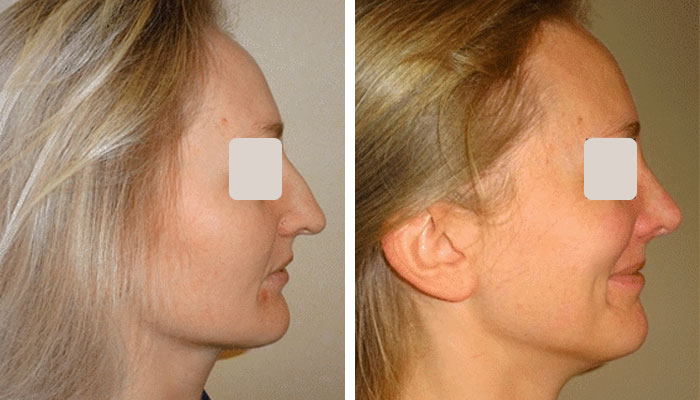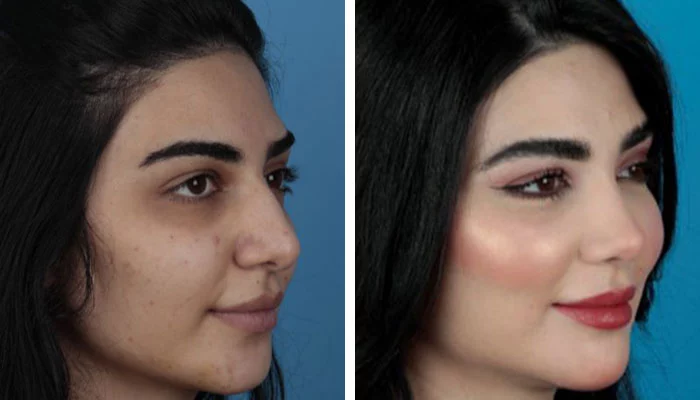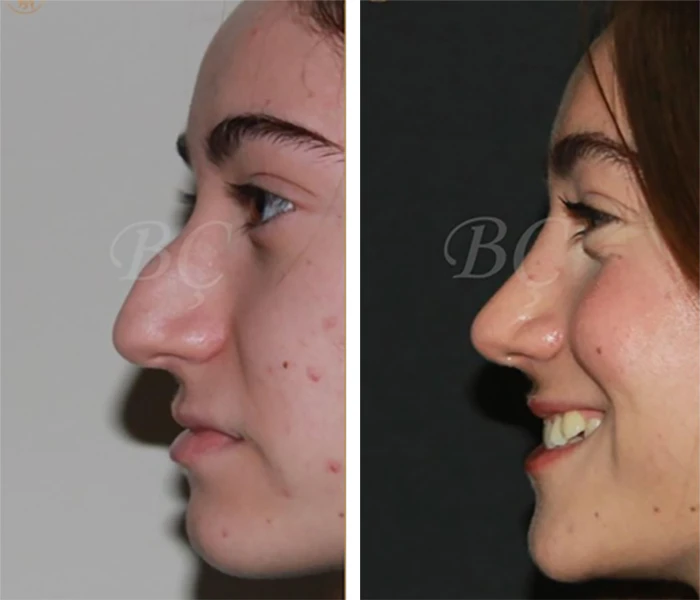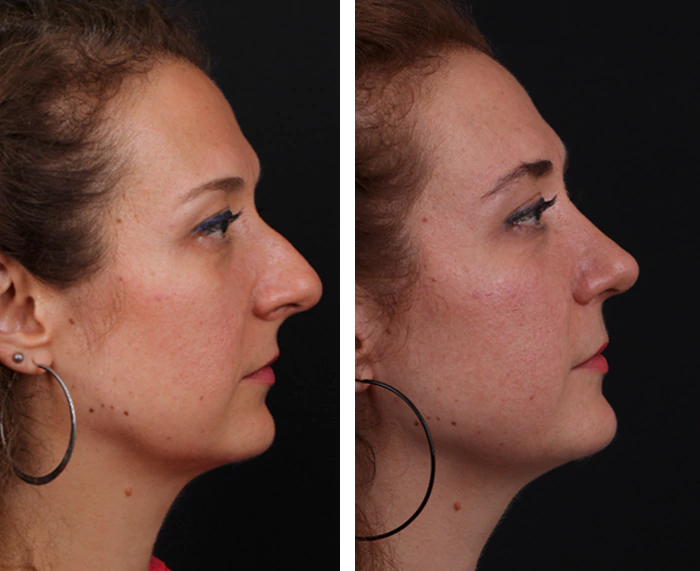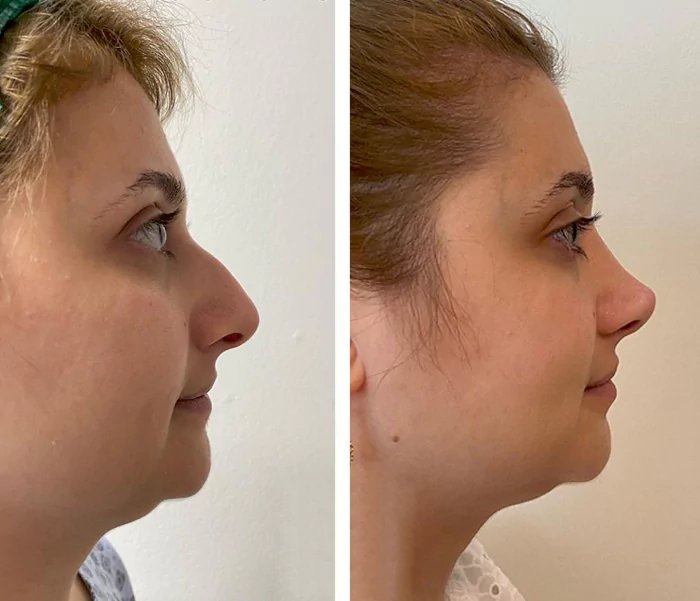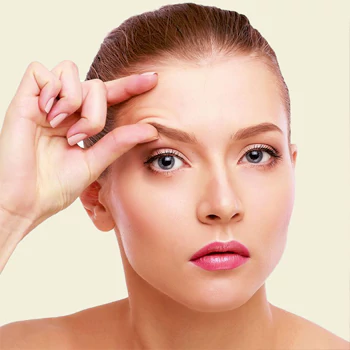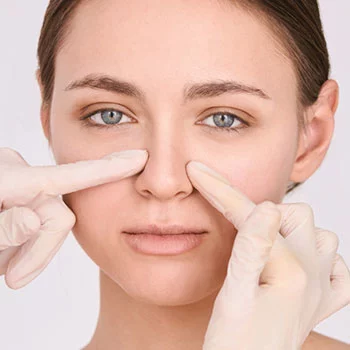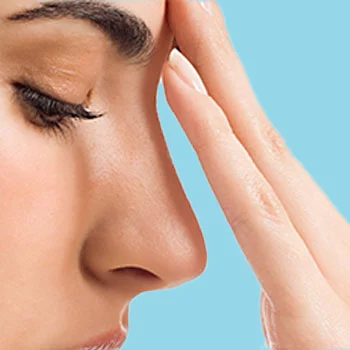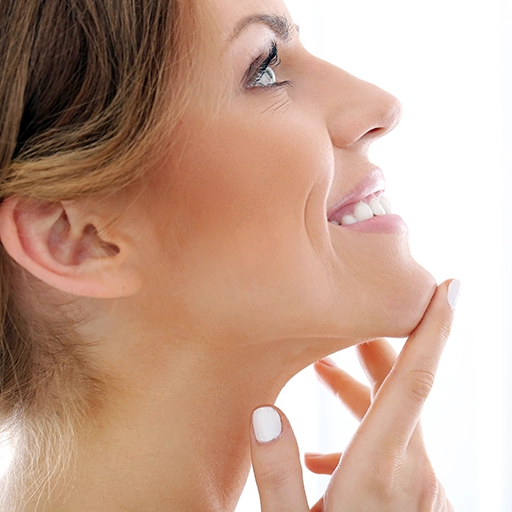What is Rhinoplasty?
Rhinoplasty, better known as ‘nose job’ and also commonly referred to as nose surgery, is a type of plastic surgery that is performed to enhance the appearance and/or function of the nose. This outpatient procedure is aimed at changing the size and shape of the nose or correcting a breathing problem caused by a deformity in the nasal structure.
What Can Rhinoplasty Do?
A rhinoplasty procedure corrects a wide range of aesthetic and functional nasal problems. The surgery can:
- Change the size of the nose (usually making it smaller)
- Straighten the nasal bridge (correcting crooked nose and removing dorsal hump)
- Narrow the nasal wings (alae)
- Reshape the nasal tip (correct a drooping or a bulbous nasal tip)
- Correct asymmetrical nostrils
- Change the angle of the nose
Am I a Good Candidate for Rhinoplasty?
There are a number of factors that determine whether or not nose surgery is right for you.
Age
Age is of the first factors that should be taken into account when considering a nose job. The minimum age for rhinoplasty is 16-17, so you must be at least 16 or 17 years old (16 for females and 17 for males) to be qualified as a nose job candidate because the facial features, including the nose, should reach their maturity, which typically happens at that age.
On the other end of the spectrum, there is no upper age limit for nose surgery as long as candidates are physically healthy enough.
Physical health
A person seeking rhinoplasty should have good general health with no illnesses or medical conditions that could affect the surgery. There are medical conditions that make rhinoplasty a risky surgery, making you a bad or a not-so-good candidate for a nose job. These conditions include:
- Bleeding disorders
- Diabetes
- High cholesterol
- High blood pressure
- Heart disease
- Lung disease
- Severe allergies
- Heavy smoking and/or drinking habit
- Pregnancy
Awareness of risks and side effects
It is also essential that people who want to have nose surgery clearly understand all the risks and downsides of the surgery. Additionally, rhinoplasty involves a period of downtime with side effects such as bruising and swelling, which you should be prepared to put up with, as well as be able to take a week or two off work or school after the surgery for recovery.
Realistic expectations
A nose job isn’t going to turn you into a spitting image of a particular model or celebrity. Every face and nose is unique, so the result of a nose job is accordingly unique and shouldn’t be compared to someone else’s.
While you can bring a photo of someone to your doctor and ask them to make your nose as close to his or hers as possible, you shouldn’t expect that it would turn out exactly the way you like it to be, because your nose isn’t exactly like the pre-operative nose of the person you see in the photo.
There might also be safety considerations that need to be taken into account when doing the surgery, preventing the surgeon to make dramatic changes to the structure of the nose.
Motivation
An ideal rhinoplasty candidate is one who has good reasons for their decision to undergo surgery. To understand if you have strong motives for a nose job operation, ask yourself these questions:
- Am I doing it of my own free will or just because someone else is persuading me to do it?
- Have I tried other non-surgical alternatives to improve my appearance?
- Have I thought carefully about the pros and cons of the surgery for some time or was it a hasty overnight decision made as a result of a sudden feeling of self-consciousness? (keep in mind that having a surgical procedure is a big decision that should be carefully considered before going for it.)
The last but not least way to find out if you’re a suitable candidate for rhinoplasty is to consult a qualified specialist. A personal consultation with a respected rhinoplasty surgeon will help you and your surgeon to come to the right decision about whether you are fit for a nose job or not.
How Is Rhinoplasty Performed?
Rhinoplasty is an outpatient procedure most of the time, meaning that there is no need for an overnight hospital stay and the patient can go home on the day of surgery.
Anesthesia
The surgery is often done with general anesthesia, meaning that the patient is put to sleep during the operation and doesn’t feel anything.
Nose surgery can also be performed with local anesthesia in conjunction with oral or IV sedation (also called twilight sleep, conscious sedation, or monitored anesthesia care (MAC)). This involves numbing the surgical area using local anesthetics drugs and administering sedatives orally or, more often, through intravenous injection to make the patient drowsy during the operation. Sedation is mostly used for patients who can’t have general anesthesia for medical reasons.
After anesthetics take effect and you fall asleep or become sedated, the surgeon will the operation. They will make incisions in the nose to make access to the underlying boney structure and make the necessary changes. Surgeons use two main incisional techniques to access the nasal structure. Depending on which technique is used, nose surgery is either open or closed.
Open vs. Closed Rhinoplasty
Open rhinoplasty, otherwise known as external rhinoplasty, involves making an incision on the part of the nose that separates the nostrils, technically called columella. In this method, the surgeon makes a small cut across the columella to detach the skin from the underlying tissue and pulls it up to access the nasal bone and cartilage and make the necessary adjustments to them.
In closed rhinoplasty, also known as endonasal rhinoplasty, there is no external incision, but all the incisions are made inside the nostrils, through which the surgeon gets access to the bony structure of the nose and makes the required changes.
There is also a third type of incision (alar incision) which is made in the crease below the nasal wings (alae) when there is a need to narrow the width of the nose. This is done regardless of whether the open or closed approach is used.
Open nose surgery is the most common type of rhinoplasty today, but some surgeons prefer to use the closed approach. There are advantages and disadvantages to each of the methods, e.g. the open method allows for more significant changes but leaves a tiny scar on the bottom of the nose, while the closed approach is a less-invasive procedure with no scar left, but smaller changes can be made to the nose.
How to Prepare for Rhinoplasty?
The first step in having a nose job is seeing a specialist for an initial consultation. The surgeon will ask you questions about your motives for rhinoplasty and your desired results. He/she also will ask you about your medical history and any medicines you take. It is crucial to be straightforward with your doctor about these issues.
A physical examination is also what you should expect during the initial consultation before rhinoplasty, in which the doctor will examine your nose to see what changes are needed to improve the shape of the nose. He/she will examine your facial features, as well as the thickness of the skin and the strength of the cartilage of the nose.
Your doctor may also prescribe some medical tests for you, including blood tests and ECG (if you’re above 40) and other tests depending on your needs and medical conditions. Once you make your decision to have a nose job after the consultation with your doctor the surgery will be scheduled.
An assistant at the doctor’s office will take a few photographs of your nose from different angles to be used by the doctor for analysis and reference during the operation, as well as for ‘before and after photos’.
On the day of the surgery you will have a pre-operative appointment with your surgeon when he/she is expected to talk to you about the risks of the surgery, how the procedure is done, and the prospected results of your nose job.
Be sure to ask every question you have about everything, including the result, how to take care of your nose after the surgery, side effects, and so on.
What medicines should you avoid before rhinoplasty?
In case you take certain drugs such as ibuprofen, aspirin, and other non-steroid anti-inflammatory drugs (NSAIDs), you should stop them two weeks before the surgery. These drugs and some herbal supplements and vitamin E are blood thinning and increase the risk of bleeding during the surgery, so they should be stopped at least two weeks before the procedure.
Also, you should stop smoking and alcohol consumption at least two weeks and one week before the surgery, respectively. Smoking can hamper the healing process after the surgery and increase the risk of too visible scarring. Alcohol can increase swelling and the risk of bleeding.
What is Rhinoplasty Recovery Like?
Rhinoplasty patients normally are discharged from the hospital a few hours after the surgery when they feel well enough to go home. After the procedure is complete, you’ll be taken to a recovery room where you’ll receive nursing care for a while until the anesthetics wear off and you become fully conscious.
You will be instructed by the doctor or his/her assistant about how to care for yourself post-operatively, including prescriptions about caring for the incision, dietary guidelines, and recovery advice.
The most daunting part of rhinoplasty recovery is the first week. You’ll need to have a nasal splint inside or on your nose for a few days after the surgery, which helps keep the newly-shaped nasal structure in place.
Some surgeons use nasal packing (tampons) to control bleeding, which is usually removed 1-3 days after surgery. The nasal splint will also be removed by the surgeon 5-7 days after the procedure. The surgeon might tape your nose after the splint removal and instruct you to replace the tape at home.
During the first week after a nose operation, you will have bruising and swelling in your nose, which will peak around day 3 and then begin to improve. That’s why you may feel your nose is stuffy and feel uncomfortable for a few days.
Most of the swelling goes down within 2 weeks after the surgery. However, there remains a slight degree of swelling for a few months after the surgery, which only you and your surgeon can notice.
When to go back to work?
While it’s fine to go back to work after getting the splint removed, some people may want to stay off work or school for a longer period until the swelling and bruising go away to a point that there is little sign of surgery in their face. So you’ll be able to return to work and social activities in 2 to 3 weeks after rhinoplasty without visible signs of surgery.
That said, rhinoplasty patients should refrain from strenuous activity for 6 weeks after surgery. This includes vigorous exercise, heavy lifting, contact sports, and physically demanding work.
How long does it take to see the final nose job result?
You can see the initial results of your nose surgery around 3 weeks after the procedure when the swelling has gone down to a level hardly visible.
After around 3 months, as the nose has partially healed and the swelling subsides to a great degree, a more “final-like” result can be seen.
However, the final result of your rhinoplasty will show up after the swelling has completely gone and your nose has completely healed, which takes a year or so. Therefore, you should be patient and not judge the outcome until a full year after your surgery.
Rhinoplasty Risks and Complications
Understanding the risks and potential complications of rhinoplasty is crucial when deciding to have a nose job. Rhinoplasty is not a very risky surgery as long as it is performed by a qualified surgeon and there is no major risk factor for the patient. But still and all, nose job candidates should be aware of the risks and potential side effects of rhinoplasty.
Nose surgery has some short-term side effects, including mild pain, discomfort, bruising, and swelling. These are common side effects of rhinoplasty that every patient experiences in varying degrees. Most of these side effects will subside by the second week after surgery.
But serious complications of rhinoplasty are uncommon and not expected to occur after a typical procedure. Some of these risks are common to all surgeries, including:
- Infection
- Bleeding
- Loss of skin sensation
- Nerve damage
- Hematoma (blood accumulation under the skin)
- Adverse reaction to anesthesia
There are also complications specific to rhinoplasty, which are:
- Scarring
- Nosebleeds
- Nasal valve collapse
- Breathing problems
- Over- or under-correction, which makes it necessary to have a revision surgery
You can minimize the risk of these complications by choosing the right rhinoplasty surgeon and following pre- and post-operative advice given by him/her.
Rhinoplasty Cost
The cost of a nose job depends on many factors, including the country and city where the surgery is performed, the experience and reputation of the surgeon, hospital expenses, etc. This includes fees for the hospital or surgery center, anesthesia, and the surgeon.
Rhinoplasty prices for those having their surgery arranged by health tourism facilitators in other countries may also include additional costs for services such as transportation, personal guide, hotel, etc.
Revision Rhinoplasty
Revision nose surgery is done when a previous procedure hasn’t been successful, either causing medical conditions such as a breathing problem for the patient or simply not meeting the patient’s aesthetic expectations.
Revision rhinoplasty is a relevantly more complex procedure than primary rhinoplasty and requires more surgical skills. This is because the structure of the nose has been altered in the previous surgery, which makes it more challenging for the surgeon to operate on it for the second time.
However, a revision nose job often produces satisfactory results for the patient by improving the results of the previous surgery.
Frequently Asked Questions
Is rhinoplasty painful?
Since you will be under anesthesia during the operation, you won’t feel any pain while the surgeon is operating on your nose. In the majority of cases, the surgery is done with general anesthesia, so the patient is completely unconscious during the surgery. In case local anesthesia with sedation is used, you won’t feel pain either. Once the anesthetic medicines wear off after the surgery, you may feel some pain and discomfort, which can be managed with pain killers prescribed by your doctor.
How long does it take to see the results of my nose job?
The initial results of rhinoplasty surgery will appear in 2-3 weeks after the surgery when most of the swelling goes down. When your nose has partially healed after around 3 months, almost 90% of the result will be achieved. As your nose continues to heal and the swelling disappears, the final result will be more apparent and after a year or so you can see the final result of your nose job.
Will insurance cover my rhinoplasty?
Because most of the time rhinoplasty is performed as a cosmetic and elective surgery, insurance doesn’t cover the costs. However, if you undergo nose surgery to fix a functional problem like a breathing difficulty caused by a deviated septum or broken nose, your insurance will probably pay for it. It is recommended that you ask your insurance about this before planning for the costs of your nose job.
What is the best age for rhinoplasty?
There is no specific right age for rhinoplasty but generally, you must be at least 16 or 17 when your nose has reached full maturity. Be sure to consult with a specialist about whether you’re fit for a nose job in terms of age and other factors.
Will rhinoplasty scar be visible?
If the surgery is done with the closed approach (closed rhinoplasty), there will be no visible scar because no external incision is made on the nose. In open rhinoplasty, as an incision is made across the columella (the tissue between the nostrils), there is a chance that you will have a scar left. However, this scar becomes less perceptible as the incision heals to the point that in most cases it is hardly noticeable after a year. Also, the visibility of rhinoplasty scar depends on the expertise of the doctor in closing the incision and the healing process, which is different from patient to patient.
What type of anesthesia is used for rhinoplasty?
Rhinoplasty can be done with either general anesthesia or local anesthesia combined with sedation. General anesthesia is typically used in the majority of rhinoplasty cases unless you have certain conditions that make it risky for you to go under general anesthesia.
Is nasal packing necessary after rhinoplasty?
No, it’s not necessary, unless under certain circumstances, such as when the patient has excessive bleeding after the surgery or there is a risk of nosebleeds, for example in patients who have chronic epistaxis. Septoplasty patients who have unstable nasal fractures may also need to get tampons after surgery that are placed into the nostrils to fix the septum in place until it stabilizes.
Can I fly after rhinoplasty?
Most doctors recommend that you wait for at least 5 days before flying after rhinoplasty, and the more you wait, the better. This is because there are the risks of nosebleeds, increased swelling, and nausea when flying in the first few days following surgery.
How should I sleep after rhinoplasty?
It is recommended that you sleep on your back and use a few pillows to keep your head elevated. This is essential to reduce swelling in the surgical site. Try to avoid sleeping on your stomach and sides because in the early days following your rhinoplasty your nose is fragile and should be carefully protected against external pressure. You can do this by placing other pillows or rolled-up blankets along your sides to prevent accidentally rolling over in your sleep.
What should I eat before rhinoplasty?
It is recommended that you follow a low-salt diet in the days leading up to the surgery to reduce swelling following the procedure. Also, you should stop blood-thinning medicines and supplements, smoking, and drinking alcohol two weeks before the surgery to lower the risk of bleeding during the surgery. In addition, if you are to have the surgery under general anesthesia, your doctor will probably ask you to not eat or drink anything from 8 to 10 hours before the procedure.
What should I eat after rhinoplasty?
We recommend that you have a liquid diet for the first day after surgery and then eat soft foods such as mashed potato, yogurt, soup, etc. in the first few days and avoid hard-to-chew foods that force you to bite or chew hard. You may want to follow a high-fiber diet including fresh fruits and vegetables, which helps your digestive system work smoothly. For speeding up the healing process, it is advised to eat foods rich in protein, vitamin C and zinc. You should also avoid salty foods because sodium causes fluid retention in the body, increasing swelling after surgery.
How long after my rhinoplasty can I have a revision rhinoplasty?
Most specialists recommend that you wait for at least one year after your nose job surgery and then consider a revision rhinoplasty. This is because the nose must fully heal and the swelling must completely disappear to minimize the risk of complications in a second operation, which takes around a year.
When can I go back to work after rhinoplasty?
The majority of patients can go back to work or school after a week or so, but if you prefer to return to work or social activities with fewer signs of surgery, you may want to wait longer until your swelling goes down to a level that’s people hardly notice.
Can I exercise after rhinoplasty?
Ligh walks are fine immediately after rhinoplasty but as for other strenuous activities, you should wait for at least 2-3 weeks. It is better to talk with your surgeon about when and how you can exercise after nose surgery. Some surgeons ask their patients to avoid intense physical activities such as running and heavy lifting for 4-6 weeks after their surgery.
Can I drive home after rhinoplasty?
As you will be still under the influence of aesthetic drugs for a while following the surgery, it is highly recommended that you refrain from driving at least 24 hours after rhinoplasty. Not only that, but you are also advised not to use public transportation alone or do activities that require high levels of alertness for 24-48 hours after your nose job surgery.

